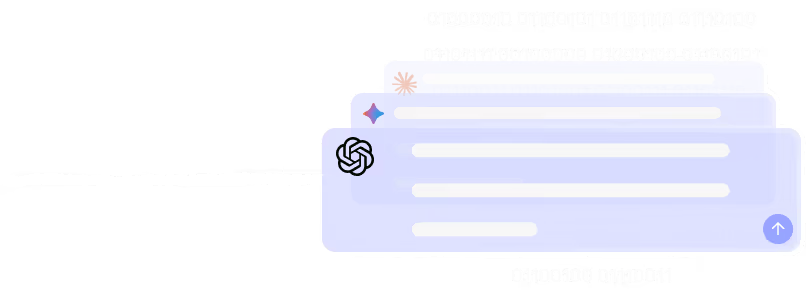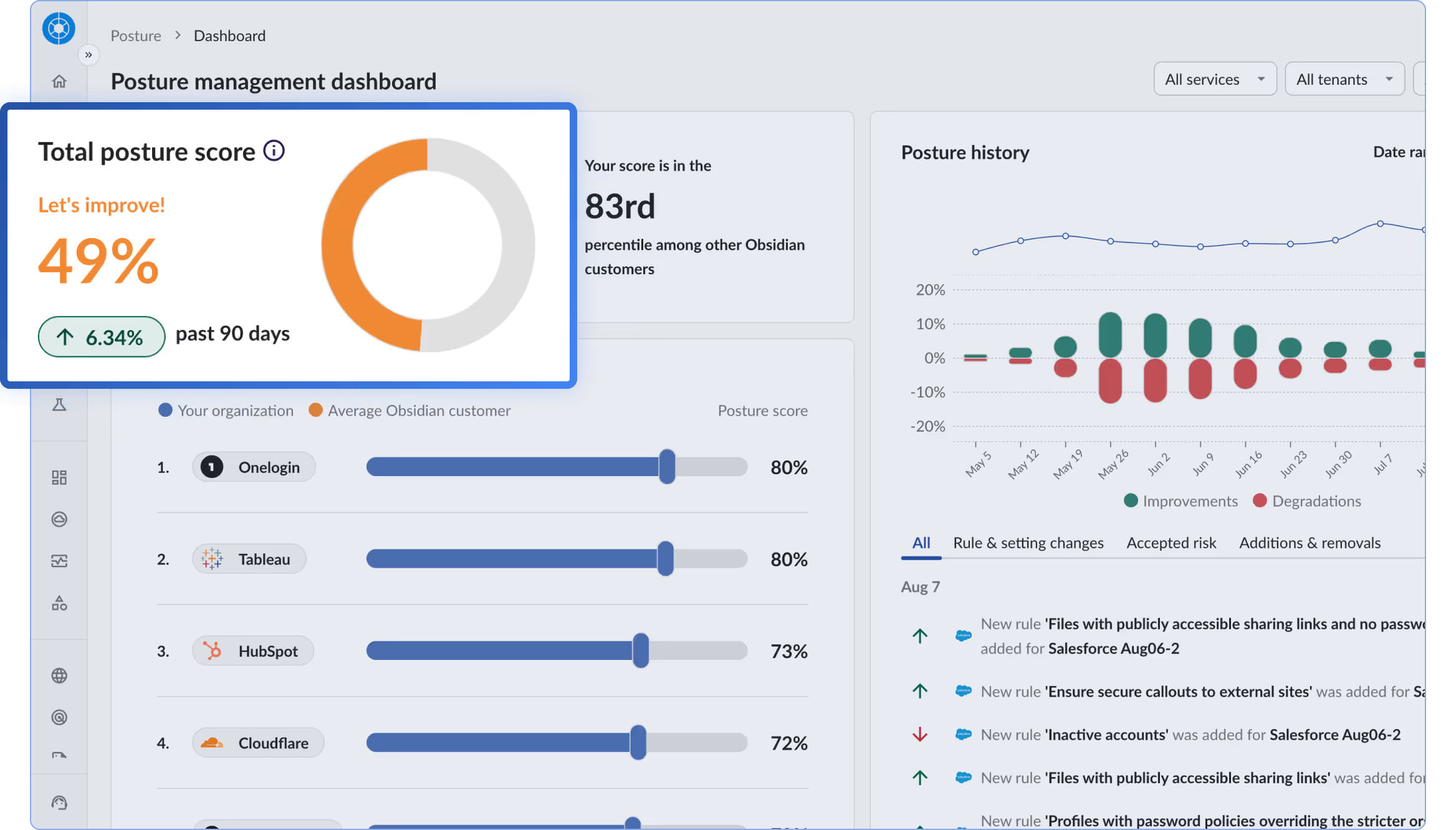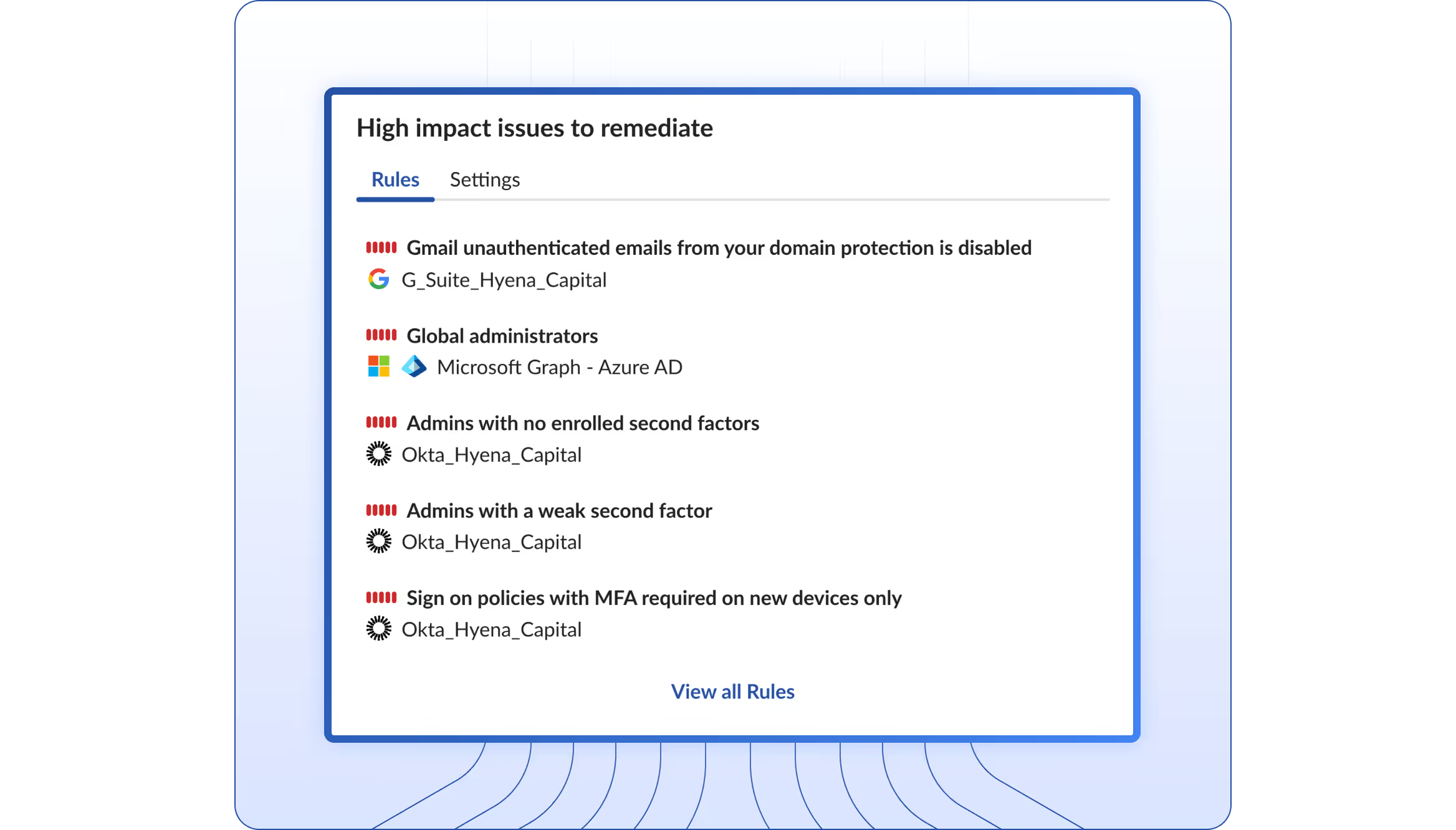Mitigate risks from unsecured third-party SaaS apps by hardening configs and enforcing consistent cloud security policies.

Securing your SaaS ecosystem is a shared responsibility, but native controls are not enough. Decentralized app ownership and constant configuration changes create risks like permission drift, insecure public links, and risky integrations that expose critical data. New blindspots have emerged hidden from Identity Providers (IdP) and Zero Trust Network Access (ZTNA) tools like web gateways and CASB. They fail to manage risk inside your SaaS, between your integrations, and fail to prevent shadow IT.
unique SaaS permissions — misconfiguring even one is a leading cause of breaches
of enterprises experienced a non-human identity compromise
(AppViewX, ESG Data)
of SaaS apps are invisible, yet most handle sensitive data

To maximize SSPM benefits, follow these guidelines:
Get complete visibility in your SaaS footprint
Integrate all critical SaaS apps from day one
Define secure configuration baselines and policy templates
Monitor continuously for deviations, shadow IT, or privilege creep
Automate remediation to reduce risk window and cut manual toil
Involve IT, security, and compliance teams to align coverage and response
Gain full visibility into your SaaS environment, including shadow IT. With one API connection, Obsidian surfaces all managed and unmanaged apps tied to your corporate identity. Find high-risk, unfederated apps and detect 30% more shadow SaaS with our browser extension.


Monitor and enforce secure settings across your SaaS apps in real time. Obsidian scores configurations based on criticality according to built-in or custom policies and flags high-priority failures. Automate alerts to ticketing systems or let app owners remediate securely via role-based access.
Go beyond static analysis. Obsidian baselines SaaS behavior to detect real risk like dormant accounts accessed from unsecured networks. Build custom posture rules, automate response, and manage exceptions all within a unified interface.


Uncover and remediate privilege creep across users and integrations. The Obsidian Knowledge Graph unifies identity across SaaS to flag weak MFA, inactive accounts, shadow admins, and overly broad scopes, human or non-human.
Track SaaS posture in real time and map controls to frameworks like SOC 2, ISO 27001, CIS, and NIST. Collaborate with app owners, enforce policies, and generate audit-ready reports with a single click.


It's easy to mix up SSPM, CSPM, and DSPM, but each targets unique security layers:
SSPM fills the gap left by infrastructure and data-centric tools — managing identity and configuration risks unique to SaaS.